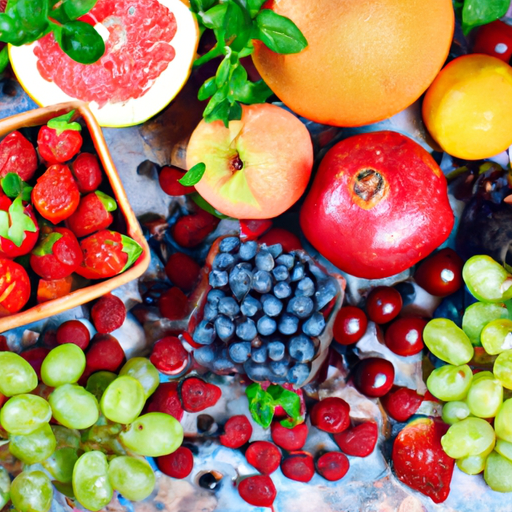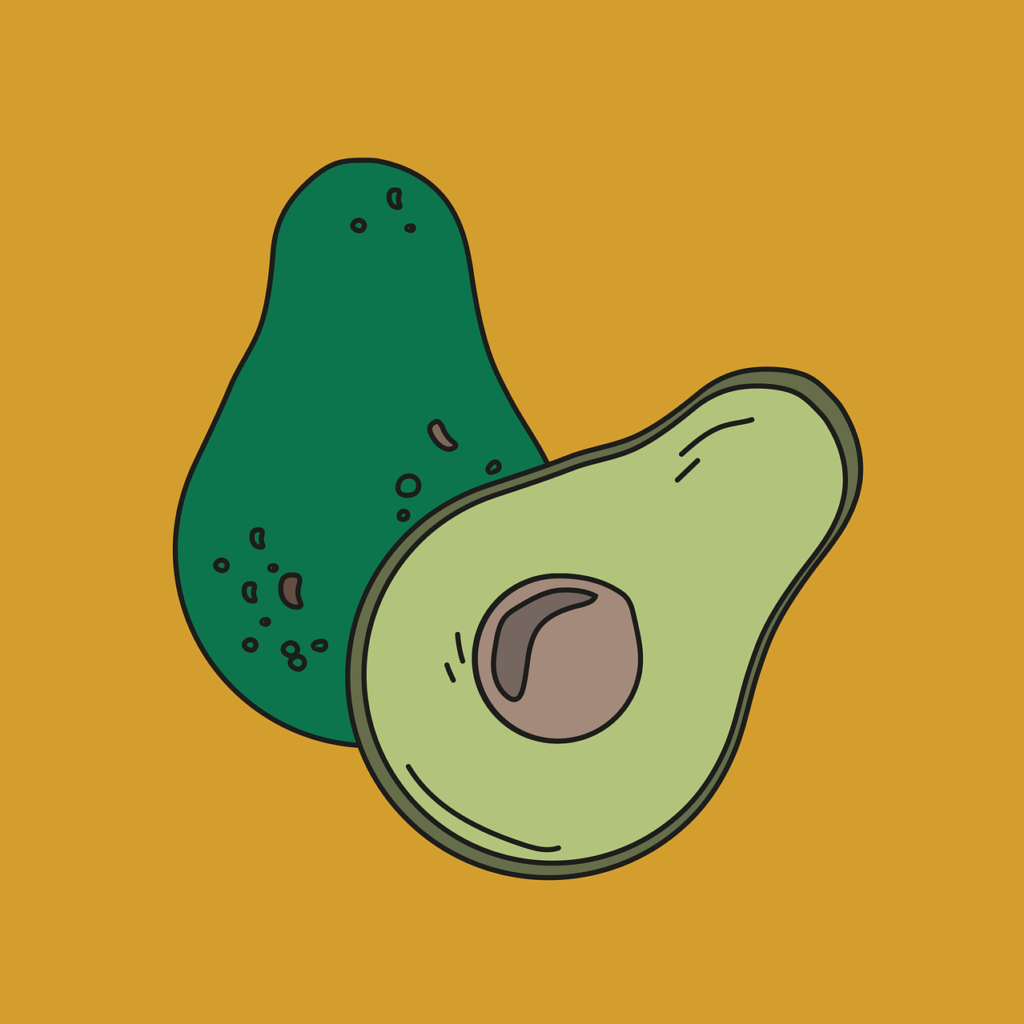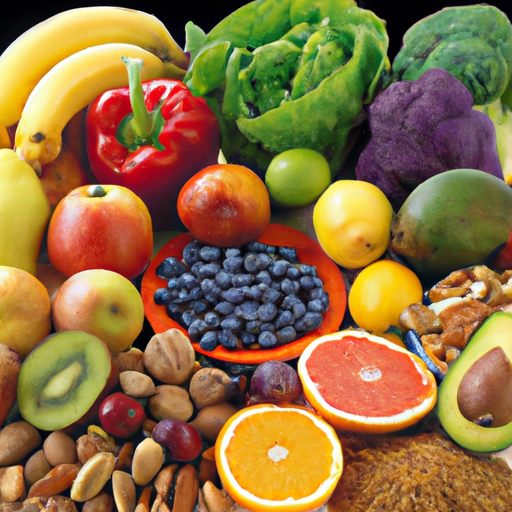Are you looking for an easy and delicious way to meet your daily fiber needs? Look no further than high-fiber fruits! These fruits are not only tasty, but they also provide you with the essential nutrients your body craves. There are two types of fiber: soluble fiber, which can be found in fruits like avocados, pears, and guavas, and insoluble fiber, which is found in the seeds and skins of fruits like berries and bananas. By incorporating these fruits into your diet, you can experience a multitude of health benefits, such as weight management, cholesterol reduction, and blood pressure stabilization. With a recommended daily fiber intake of 28 grams for women and 34 grams for men, high-fiber fruits like passion fruit, guava, raspberries, blackberries, and more can help you reach your goals. Don’t worry if fresh fruits are not readily available, frozen fruits are just as nutritious. And remember, eating the whole fruit or enjoying it blended provides more fiber than juicing. So, grab your favorite high-fiber fruit and start nourishing your body today!

Types of Fiber
Fiber is an essential component of a healthy diet, and there are two main types of fiber: soluble and insoluble fiber. Both types are important for maintaining good health and optimal digestion.
Soluble Fiber
Soluble fiber is named so because it dissolves in water, forming a gel-like substance in the intestines. This type of fiber can be found in foods such as avocados, pears, and guavas. When consumed, soluble fiber can help to slow down digestion, keeping you feeling fuller for longer. It also aids in regulating blood sugar levels by slowing down the release of glucose into the bloodstream.
Insoluble Fiber
On the other hand, insoluble fiber does not dissolve in water and passes through the digestive system largely intact. It adds bulk to the stool and helps to prevent constipation. Insoluble fiber can be found in the seeds and skins of fruits like berries and bananas. Consuming foods rich in insoluble fiber promotes regular bowel movements and aids in maintaining a healthy digestive system.
Benefits of Fiber
Including an adequate amount of fiber in your diet offers several benefits, contributing to overall health and well-being.
Weight Management
If you’re looking to maintain or lose weight, fiber-rich foods can be your best friend. High-fiber foods are generally low in calories and take longer to digest, which means they can help you feel satisfied without consuming excess calories. Additionally, the bulk provided by fiber can help prevent overeating by filling up your stomach. By incorporating more fiber into your meals, you can promote weight management in a healthy and sustainable way.
Cholesterol Reduction
Soluble fiber, in particular, has been shown to have cholesterol-lowering effects. It helps to bind with cholesterol particles in the digestive tract, preventing them from being absorbed into the bloodstream. By reducing the levels of LDL cholesterol, often referred to as “bad” cholesterol, fiber can help to lower the risk of heart disease and improve overall cardiovascular health.
Blood Pressure Stabilization
Consuming a diet rich in fiber has also been associated with lower blood pressure levels. Soluble fiber works to regulate blood pressure by reducing the amount of sodium absorbed in the body. Additionally, a higher intake of fruits and vegetables, which are naturally high in fiber, is often associated with a lower risk of hypertension.

Daily Fiber Intake
While the benefits of fiber are clear, it’s important to know how much fiber you should be consuming daily to reap these benefits. The recommended daily fiber intake varies depending on factors such as age and gender.
Recommended Intake for Women
For women up to the age of 50, the recommended daily fiber intake is 25 grams. However, after the age of 50, this amount decreases to 21 grams due to changes in metabolism and digestion. It’s important to note that during pregnancy, the fiber intake may need to be adjusted, and it’s always best to consult with a healthcare professional for personalized advice.
Recommended Intake for Men
For men up to the age of 50, the recommended daily fiber intake is 38 grams. After the age of 50, the amount decreases to 30 grams. Just like with women, individual circumstances such as health conditions may require adjustments to the recommended fiber intake. Seeking guidance from a healthcare professional can help determine the ideal fiber intake for each person.
High-Fiber Fruits
One of the tastiest ways to increase your fiber intake is by incorporating high-fiber fruits into your diet. Not only do they provide essential nutrients, but they also satisfy your sweet tooth while boosting your fiber intake. Here are some delicious and fiber-rich fruits to include in your daily meals:
Passion Fruit
Passion fruit is a tropical fruit that is not only rich in flavor but also in fiber content. With around 10 grams of fiber per fruit, it makes for a tasty and nutritious addition to your diet.
Guava
Guava is another fiber-packed fruit that offers a sweet and tangy flavor. Just one cup of guava provides approximately 9 grams of fiber, making it a great choice for meeting your daily fiber needs.
Raspberries
Raspberries, known for their vibrant color and delicious taste, are also a fantastic source of fiber. With an impressive 8 grams of fiber per cup, these berries make a nutritious addition to your breakfast or snack.
Blackberries
Similar to raspberries, blackberries are also rich in fiber, offering around 8 grams per cup. Aside from their fiber content, blackberries are also packed with vitamins and antioxidants, making them a true superfood.
Pear
Pears are not only juicy and flavorful but also an excellent source of fiber. A medium-sized pear contains about 6 grams of fiber. Including pears in your diet can provide a delicious way to increase your fiber intake.
Avocado
Avocado, often celebrated for its healthy fats, is also a great source of fiber. Just one medium-sized avocado provides roughly 10 grams of fiber. Whether you enjoy it on toast or in a salad, avocados can help you meet your fiber needs.
Kiwifruit
Kiwifruit may be small, but it packs quite a punch when it comes to fiber. With around 5 grams of fiber per kiwifruit, incorporating this delicious fruit into your diet can contribute to your daily fiber goals.
Blueberries
Not only are blueberries bursting with antioxidants, but they are also a good source of fiber. A cup of blueberries contains approximately 4 grams of fiber. Whether enjoyed fresh, frozen, or added to smoothies, blueberries are a versatile and nutritious choice.
Oranges
Oranges are not only refreshing but also a great source of dietary fiber. One medium orange provides around 3 grams of fiber, making it a sweet and fiber-rich snack option.
Grapefruit
Grapefruit is another citrus fruit that contains a notable amount of dietary fiber. Just half a grapefruit offers roughly 2 grams of fiber. Enjoy it as part of your breakfast or use it to add zest to salads.
Pomegranate
Pomegranate seeds are not only delicious but also provide a good amount of fiber. Adding these bright and tangy seeds to your salads, yogurt, or smoothies can help boost your daily fiber intake.
Mandarins
Mandarins, also known as clementines or tangerines, are small citrus fruits that are easy to peel and enjoy on the go. One mandarin contains about 2 grams of fiber, making it a healthy and convenient snack.
Strawberries
Strawberries, with their vibrant hue and sweet taste, are a crowd favorite. And the good news is, they also offer a decent amount of fiber. Enjoy a cup of strawberries, and you’ll get around 3 grams of fiber.
Banana
Bananas are not only a convenient and portable snack but also a good source of dietary fiber. One medium-sized banana contains roughly 3 grams of fiber, making it a great option for increasing your daily fiber intake.
Apricot
Apricots are small, golden fruits that are not only delicious but also provide a healthy dose of fiber. With around 2 grams of fiber per apricot, incorporating these fruits into your diet can be a fiber-rich choice.
Cherries
Cherries, known for their juicy and sweet taste, are not just a delightful snack but also a good source of fiber. A cup of cherries offers approximately 3 grams of fiber, making them a fantastic addition to your diet.
Mango
Mangoes, with their tropical flavor and creamy texture, are also a good source of dietary fiber. One medium-sized mango contains around 3 grams of fiber. Enjoy it as a snack or add it to your smoothies for a tasty fiber boost.
Fresh vs Frozen Fruits
When it comes to getting your daily dose of fiber, you may wonder whether fresh or frozen fruits are the better choice. The truth is, both fresh and frozen fruits can provide ample amounts of fiber and offer their own unique advantages.
Fresh fruits are often touted for their vibrant flavors and textures. They can be enjoyed in their natural state, providing a satisfying sensory experience. Fresh fruits also tend to have a higher water content, making them refreshingly hydrating. Additionally, fresh fruits offer the highest nutrient content, as they have not undergone any preservation methods.
On the other hand, frozen fruits can be a convenient and versatile option. They are typically picked and frozen at their peak ripeness, locking in their nutritional value. Freezing fruits preserves their fiber content, making them equally as healthy as their fresh counterparts. Frozen fruits also offer the advantage of longer shelf life, allowing you to keep a variety of fruits on hand for when you need them.
Ultimately, the choice between fresh and frozen fruits comes down to personal preference and convenience. Whether you opt for fresh or frozen, both alternatives offer an excellent way to increase your fiber intake and enjoy a wide range of essential nutrients.
Maximizing Fiber Intake
Now that you know the incredible benefits of fiber and the variety of high-fiber fruits available, let’s explore some strategies to maximize your fiber intake and make the most of your dietary choices.
Eating the Whole Fruit
When it comes to consuming fruits, it is generally best to eat them in their whole form to reap the full fiber benefits. The highest concentration of fiber in fruits is typically found in their skin, seeds, and pulp. By eating the fruit as a whole, you ensure that you’re getting all the fiber it has to offer. So, instead of peeling the skin or removing the seeds, embrace the entirety of the fruit to maximize your fiber intake.
Blending the Fruit
If you prefer a more versatile approach to consuming fruits, blending them into smoothies can be a great option. When you blend fruits, you retain the fiber from the whole fruit, including the skin and pulp. Smoothies offer a delicious and convenient way to combine different fruits and increase your fiber intake in one easy-to-consume drink.
Avoiding Juicing
While juicing has gained popularity as a quick and easy way to consume fruits, it may not be the best choice for maximizing fiber intake. Juicing involves extracting the liquid from fruits, leaving behind the fibrous pulp. While this may result in a smooth and refreshing juice, it significantly reduces the amount of fiber you consume. To make the most of the fiber in fruits, it’s best to opt for whole fruits or blended smoothies.
Incorporating high-fiber fruits into your diet can be a simple and enjoyable way to meet your daily fiber needs. Whether you choose to snack on them as they are, blend them into smoothies, or use them as a topping for yogurt and salads, these fiber-rich fruits offer a wide range of benefits for your overall health and well-being. So go ahead, grab that juicy pear or blend up a delicious berry smoothie, and let the fiber work its wonders in your body!



